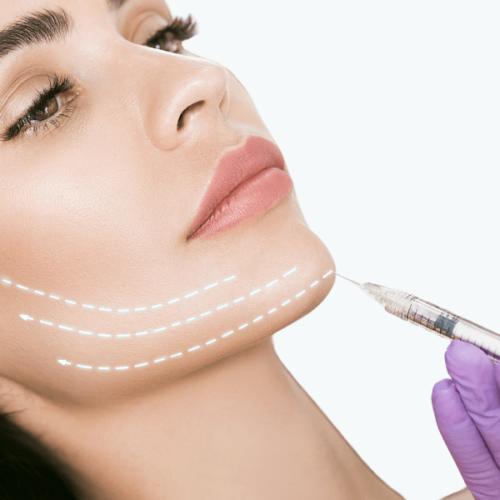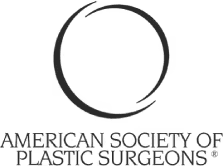FACE
Facelift Surgery for Different Face Shapes: Customising Your Results

Personalised Facelifts for Unique YOU!
When it comes to facelift surgery, every face is unique, and so are the desired results. Different face shapes require personalized techniques to achieve natural, balanced outcomes. Whether your face is round, square, or heart-shaped, customizing your facelift ensures the contours and features are enhanced in a way that suits you best.
Dr Faisal Salim understands that no two patients are the same, offering tailored facelift solutions that cater to your individual facial structure. With his expertise, you can achieve results that harmonize with your natural beauty, leaving you feeling rejuvenated and confident.
What are different face shapes?
Common face shapes include:
- Oval: Often seen as the ideal shape, with balanced proportions.
- Round: Characterized by fuller cheeks and a softer, circular contour.
- Square: Marked by a strong jawline and equal width at both the forehead and jaw.
- Heart: Broader at the forehead, tapering down to a narrower chin.
- Long/Oblong: A longer face with less width, frequently featuring a more prominent chin.
Each face shape has distinct features that influence the approach and technique for an effective facelift surgery.
What is a Facelift Surgery?
A facelift, or rhytidectomy, refers to a surgical procedure designed to bring down signs of aging in the face and/or neck by adjusting or removing skin, fat, and muscle. While facelifts are categorised as cosmetic restorative surgeries, they don’t alter your underlying facial structure or cease the aging process. Moreover, they are not intended to tackle surface-level issues like fine lines, sun damage, or skin discoloration. Every facelift is highly tailored to the individual’s facial features and desired outcomes.
The success of a personalized facelift greatly depends on the surgeon’s expertise. Selecting a plastic surgeon with an in-depth understanding of various face shapes and experience in performing customized facelifts is essential. During your consultation, our surgeon will run a thorough assessment of your face shape as well as specific aging concerns to create a plan that’s just for you.
What are the different types of Facelift?
If you’re thinking about getting a facelift, it’s important to know there are nine different types of facelifts, each designed to target specific areas of your facial structure.
Deep Plane/SMAS Facelift
This type of facelift aims to correct sagging skin around the chin and neck by lifting and reinforcing the underlying muscles. The procedure goes beneath the superficial musculoaponeurotic system (SMAS), located just under the skin near the muscles responsible for facial expressions. By repositioning and smoothing this layer, your surgeon can reduce wrinkles and give a more youthful, refreshed appearance.
Mini Facelift
A mini facelift involves small, discreet incisions made along the hairline. This aids the surgeon in tightening and smoothing the skin while also removing excess tissue. This technique is particularly effective for reducing or eliminating jowls, which often develop around the lower cheeks and mouth due to a decline in collagen production with age.
Mid-Facelift
As its name suggests, the mid-facelift focuses on the middle portion of the face, especially the cheeks. Instead of using implants to enhance cheek volume, the surgeon lifts the existing tissue to eliminate sagging and smooth out fine lines. This procedure is best for those without jowls or marionette lines. Nevertheless, it can be done in conjunction with other treatments to address these concerns.
Cheek Lift
Similar to the mid-facelift, a cheek lift is designed to elevate the cheekbones and minimize fine lines and wrinkles in the mid-face region. This procedure can help achieve a more lifted, youthful appearance while also reducing under-eye puffiness and softening nasolabial folds.
Jawline Rejuvenation
Signs of aging often appear around the jaw and neck, especially in women. This facelift surgery typically involves removing excess fat from the neck through liposuction, creating more room for the surgeon to sculpt and smooth the jawline for a refined, contoured look.
S-Lift
Named for the S-shaped incision made along the lower face, this procedure allows the surgeon to divide the top layer of skin and the underlying muscles and tissues. The skin is then lifted, excess fat is eliminated, and the muscles are contoured, resulting in smoother, wrinkle-free skin.
Cutaneous Lift
Focusing on the lower face, jaw, and neck, this facelift surgery involves incisions around the hairline and ears. The surgeon separates the skin from the underlying muscles, removes excess skin, and stretches the remaining skin to the incision points. The tightened skin creates a smoother, more youthful appearance, much like ironing out wrinkles in fabric.
Recovery and Results of Facelift Surgery: What to Expect
The recovery process following a facelift surgery may vary depending on the severity of the procedure.
In the first few days after surgery, it’s common to experience some swelling, bruising, and discomfort around the face and neck. These symptoms are temporary and usually begin to subside after the first week. Your surgeon may recommend wearing a compression garment to reduce swelling and support the healing tissues. It’s essential to keep your head elevated during this time and avoid any strenuous activities.
Facelift Scars or Mini Facelift Scars
While facelift incisions are placed strategically in inconspicuous areas like the hairline area, under the chin, or behind the ears — some degree of scarring is inevitable. However, with proper care, these facelift scars usually fade significantly over time, becoming barely noticeable. Surgeons use advanced techniques to ensure scars are as discreet as possible, and they will provide guidance on how to care for your skin post-surgery to minimize their appearance.
Long-Term Results
As the swelling diminishes, you’ll start to see the full effects of your facelift, typically within three to six months. The outcomes of a facelift can be long-lasting, with many patients enjoying a more youthful and rejuvenated appearance for years to come. However, it’s important to remember that while the procedure can turn back the clock on aging, it cannot stop the natural aging process entirely. Maintaining a healthy lifestyle and skincare routine can help prolong your results.
In summary, facelift surgery offers significant rejuvenation benefits, but a smooth recovery and proper scar management are key to achieving the best outcome. With time and care, scars fade, and the refreshed, youthful appearance you’ve been aiming for will come to light.
Looking for an utterly customized facelift surgery that can enhance your features? Well, contacting our plastic surgery expert Dr Faisal Salim, can be a good idea!








